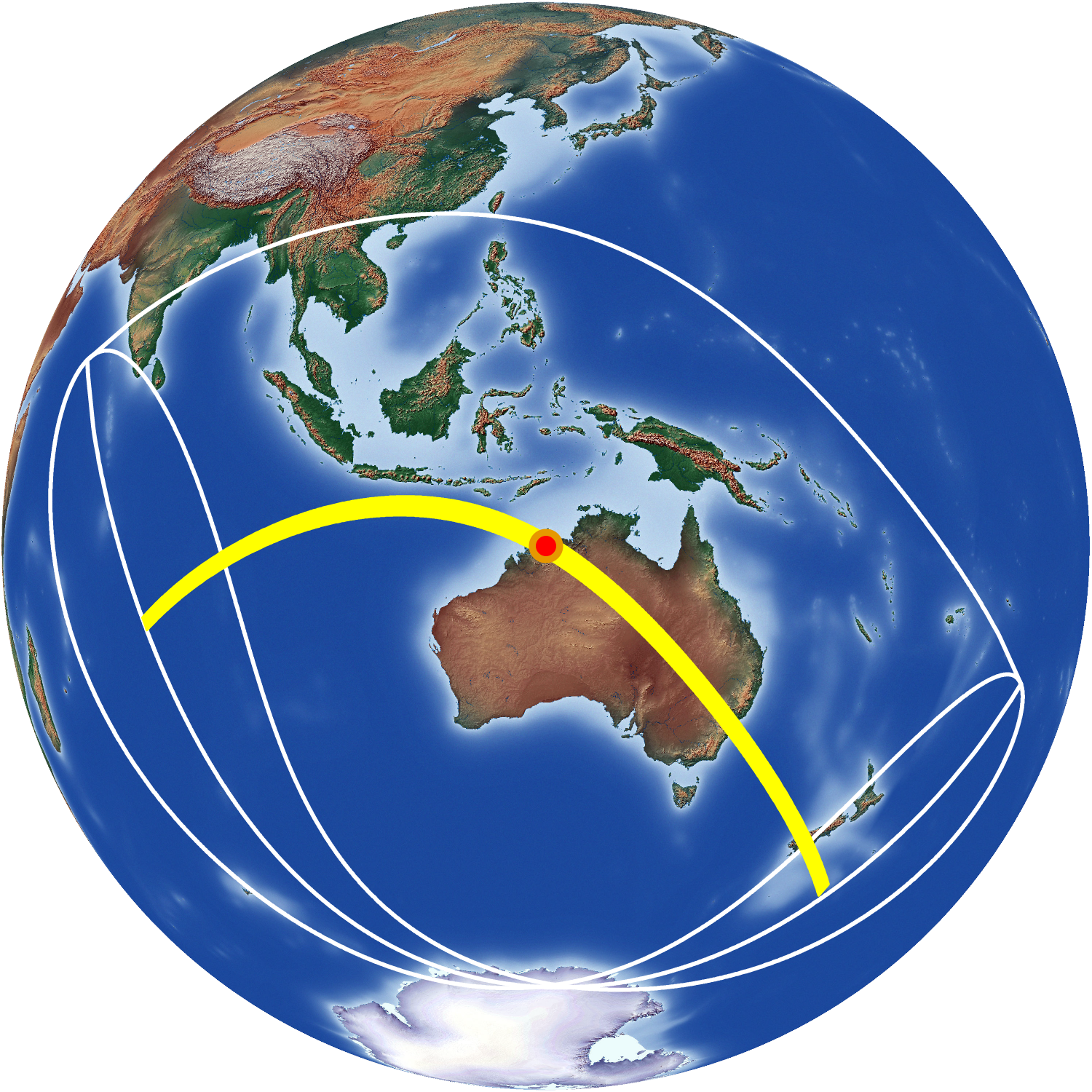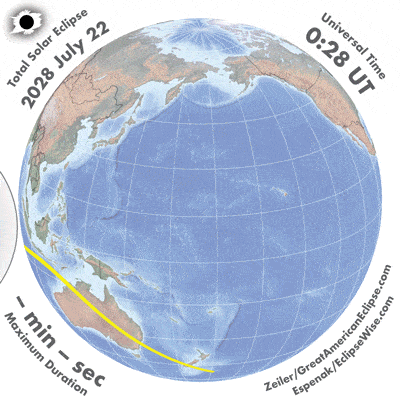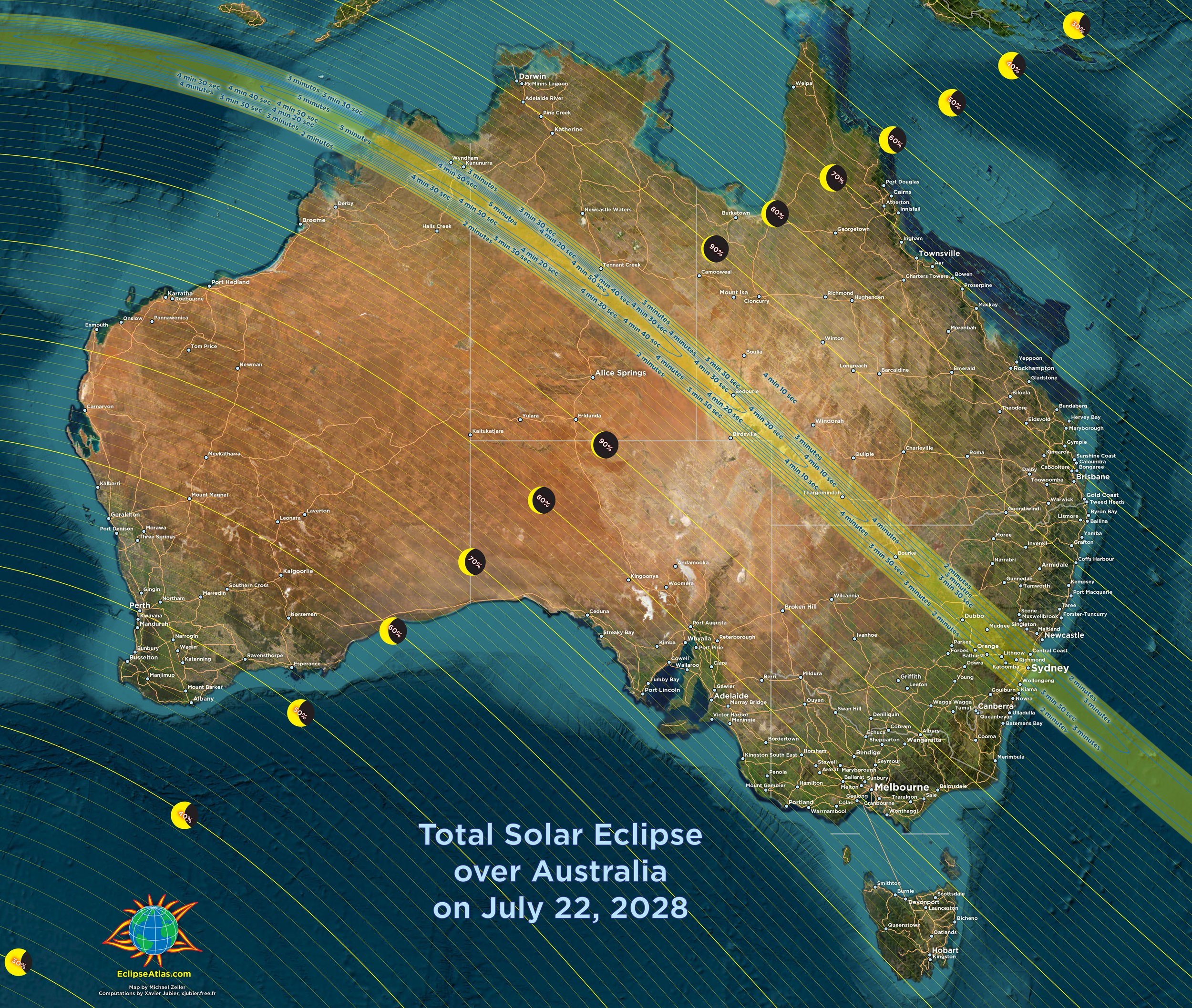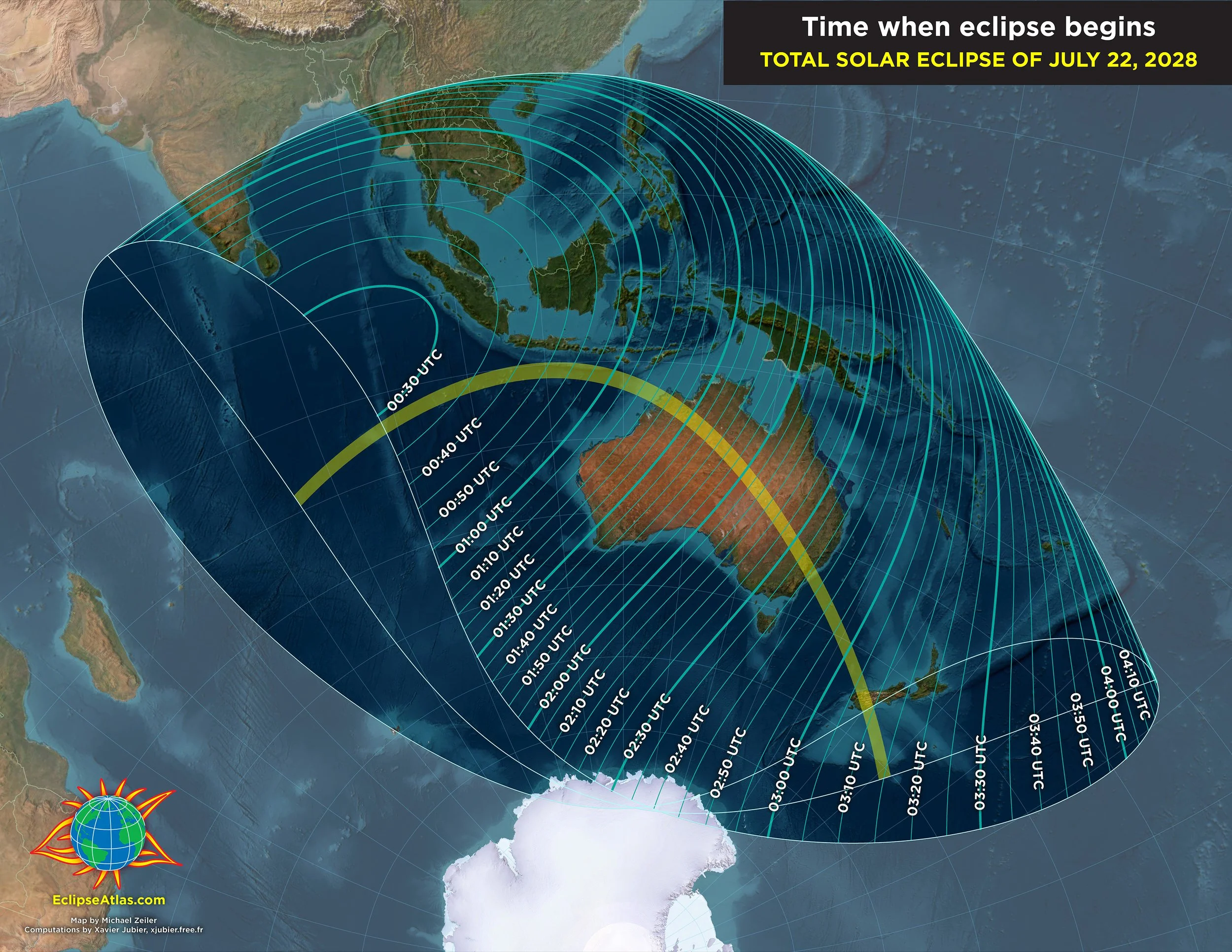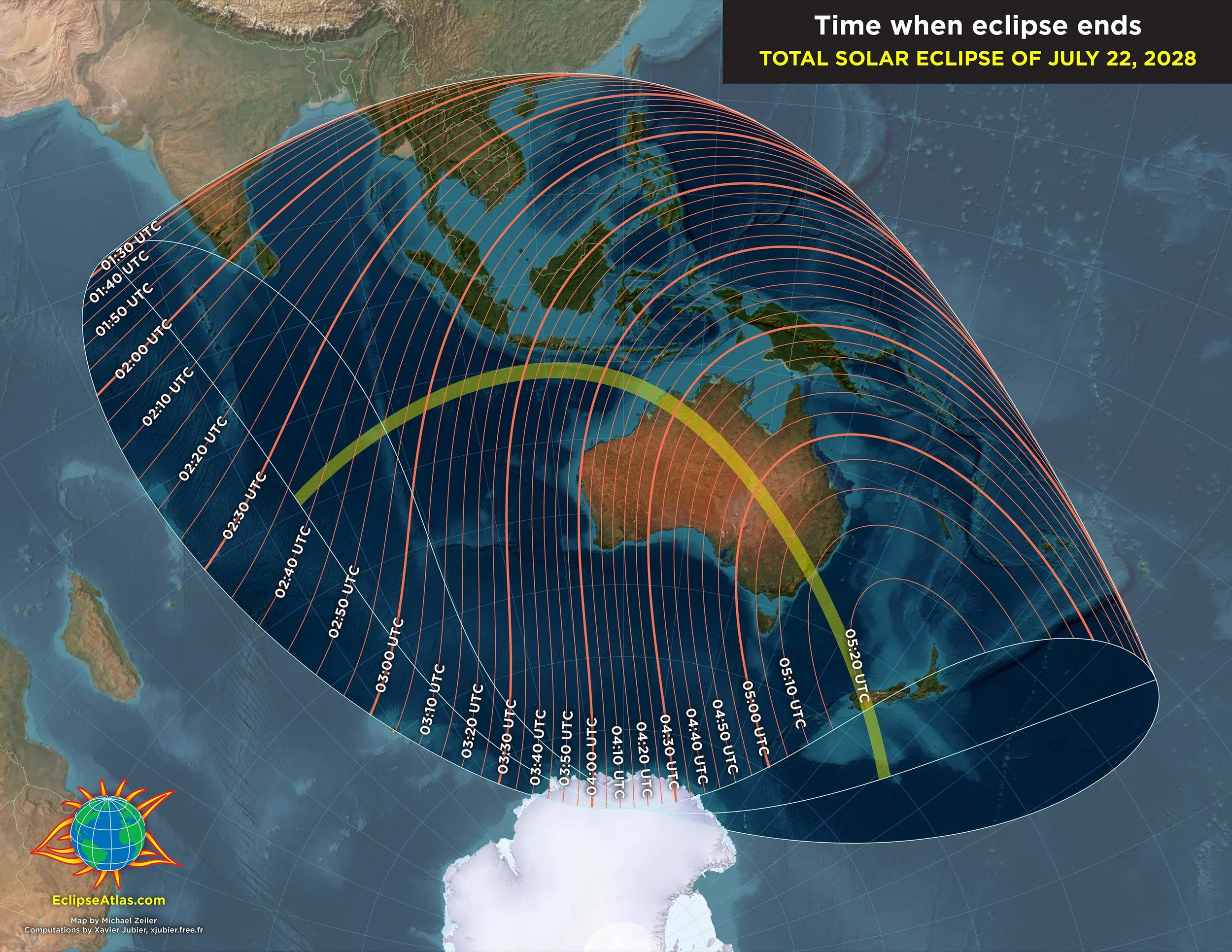Total Solar Eclipse of July 22, 2028
The total eclipse begins in the Indian Ocean at sunrise and passes over the Cocos (Keeling) Islands, Christmas Island, and the Scott Reef Nature Reserve. The Moon’s shadow next touches the Kimberley coast of northwest Australia shortly before reaching the point of greatest eclipse with a maximum duration of 5 minutes and 10 seconds. The path of totality cuts a diagonal through Australia and leaves the continent at Sydney, which enjoys up to 3 minutes and 44 seconds of darkness. The shadow then crosses the Tasman Sea to the South Island of New Zealand. Dunedin experiences 2 minutes and 47 seconds. The total eclipse ends at sunset in the South Pacific Ocean.
Total solar eclipse over Sydney
Totality bathes Sydney, the largest metropolitan area in Australia with a population of over five million inhabitants. The center line of the path of totality crosses the Sydney metropolitan area with a duration of up to 3 minutes and 44 seconds. About 20% of the population of Australia resides within this metropolitan area.
The eclipse in motion
The animation shows the inner shadow (umbra) and outer shadow (penumbra) of the eclipse from the perspective of the Moon. The umbra is where the total solar eclipse will be seen. The penumbra is where a partial solar eclipse will be observed from Southeast Asia, Indonesia, Australia, New Zealand, and South Pacific island.
A careful look at this animation shows how the Earth’s axial tilt, the Moon’s orbital inclination, and the offset from Earth’s center (called gamma) combine to create this curved eclipse path of totality on Earth.
The eclipse in summary
The maximum duration of totality occurs within the red dot on the yellow path of totality in the Kimberly region of Australia.
Eclipse magnitude is the fraction of the Moon’s apparent disk size compared to the Sun.
Eclipse gamma is the fraction of the how close the center of the Moon’s shadow passes to the center of Earth.
Learn about Saros 146 at www.eclipsewise.com/solar/SEsaros/SEsaros146.html
Overview of the eclipse
Orthographic view of the eclipse
Overview of Australia and New Zealand with eclipse circumstances
Total solar eclipse over Australia
Overview of the eclipse over Australia
Total solar eclipse over Sydney
Navigation map for the Kimberley coast
Overview of the eclipse over Australia from the Atlas of Solar Eclipses - 2020 to 2045 by Michael Zeiler and Michael Bakich
Detail map of Sydney, New South Wales from the Atlas of Solar Eclipses - 2020 to 2045 by Michael Zeiler and Michael Bakich
Total solar eclipse over New Zealand
The Solar Eclipse over New Zealand
Total Solar Eclipse over the South Island
South Island of New Zealand From the Atlas of Solar Eclipses - 2020 to 2045 by Michael Zeiler and Michael Bakich
Circumstances of the eclipse
Maximum eclipse obscuration
Time when eclipse begins
Time of greatest eclipse
Time when eclipse ends
Sun altitude when eclipse begins
Sun altitude at maximum eclipse
Sun altitude when eclipse ends

